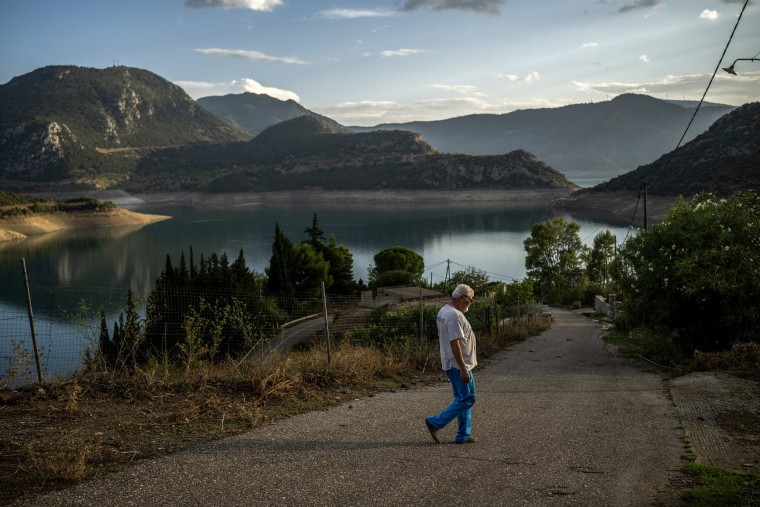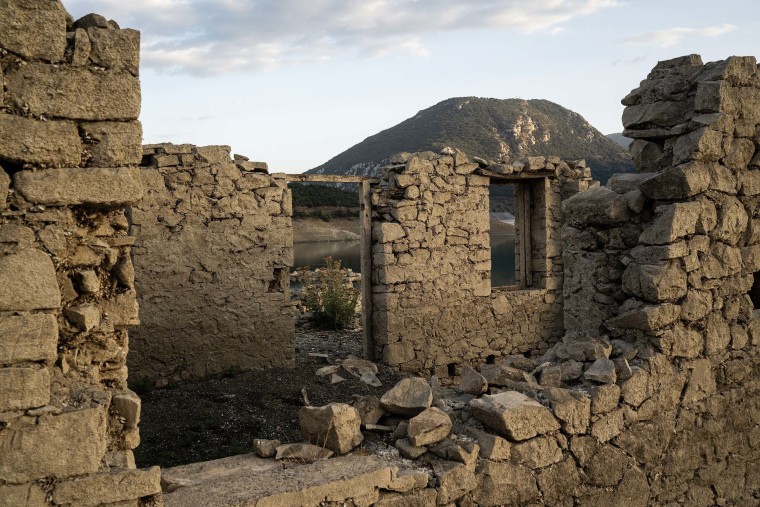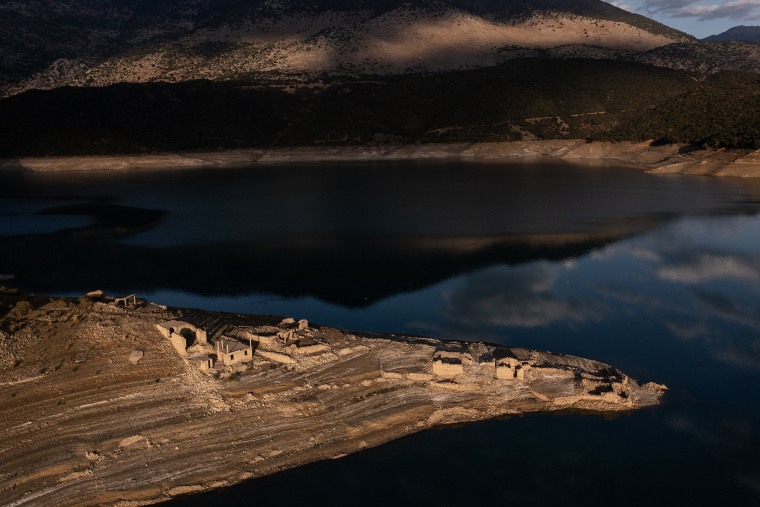From beneath the shrinking Lake Mornos in central Greece, the muddied remains of homes are reemerging nearly 45 years since the village that once stood here disappeared underwater.
After a winter of hardly any snow, a summer of punishing heatwaves and months of little rain and drought across much of Greece, the huge man-made lake which supplies water for nearly half the Greek population has dwindled to its lowest level in decades.
“Day by day, the water goes down,” said Dimitris Giannopoulos, mayor of the broader Dorida municipality, who said nothing similar had been seen for 33 years.

Long stretches of cracked soil surround the ruins of the lost village of Kallio, which was flooded in 1980 to create a lake to meet the ever-increasing water needs of the capital, some 125 miles away. Bricks lie among mounds of seashells.
Greece’s arid Mediterranean climate has made it particularly susceptible to the effects of global warming, which has worsened summer wildfires including blazes that reached the outskirts of Athens last month. Scientists say extreme weather linked to climate change is now driving the decline of the lake.
“It is an alarm bell,” said Efthymis Lekkas, professor of disaster management at the University of Athens.

“We don’t know what will happen in the coming period. If we have a rainless winter, things will get difficult.”
Giannopoulos gestures towards Mount Giona towering over the lake, which used to be snow-capped but saw none last winter, Greece’s warmest on record. On the lake’s receding rim, trees have taken on a yellowish hue.
“They lack water. This has never happened before,” he said.
Wells in the area are drying up and surrounding villages, which do not take water from the lake, suffered water cuts this summer, he said. A local firefighter chief said the risk of wildfires loomed as the forests became drier.

The lake’s surface area has shrunk from around 6.5 square miles in August 2022 to just 4.5 square miles this year, according to satellite images released by Greece’s National Observatory.
Water reserves there and at the three other reservoirs supplying Attica, a region of around 4 million people which includes Athens, has also dropped substantially.
The state-run Athens water company EYDAP had begun supplying the network with additional sources of water, it said.

Former residents of Kallio were surprised to see the village again, but saddened at its state.
“I used to see it full and say it was a beach. Now all you see is dryness,” said 90-year-old Konstantinos Gerodimos.
His 77-year-old wife Maria chimes in: “If it continues like this, the entire village will appear, all the way to the bottom, where the church and our home was.”
